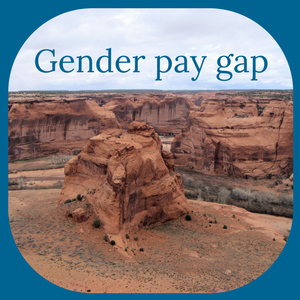
Last week the BBC published the salaries of employees earning over £150,000 and they immediately hit the headlines when it was revealed that two-thirds of its stars earning more than this amount are male. The results were not necessarily surprising, but they were shocking and opened debate on the disparity over gender pay.
Despite the Equal Pay Act of 47 years ago, women can expect to earn significantly less than men over their careers in Britain today. Few will disagree that the gender pay gap remains one of the biggest barriers to achieving equality for women at work. As an employer how are you working towards reducing the gender pay gap?
What is it?
The gender pay gap is not the same as pay discrimination or equal pay. Equal pay deals with the pay differences between men and women who carry out the same or similar jobs. The gender pay gap is based on all employees in an organisation and comparing the average pay between men and women, no matter what their role is.
In April 2017, the Equality Act 2010 (Gender Pay Gap Information) Regulations came into force. This requires employers with 250 or more employees to publish results of their gender pay gap analysis.
What are the causes?
The reasons are many and complex, a large part is due to unconscious bias that still goes unchallenged. Other reasons include the historical thinking of men as ‘breadwinners’, with higher value being placed to jobs requiring traditionally ‘male’ qualities.
Whereas there's a concentration of women in roles that traditionally have a lower value placed on them, for example the care sector and leisure industry. Feminised sectors tend to be less valued and less well paid. Part-time roles, childcare and other caring requirements also play a part, as women still tend to be the ones taking on these responsibilities. Women are also missing out on promotion opportunities due to a break in career for maternity leave. They can find that their male contemporaries are promoted ahead of them as they return from a break from raising their children. Women also make up the majority of those earning less than the living wage.
As an employer what can you do?
Tackling the issue of the gender pay gap requires employers to be proactive and create an action plan to redress the imbalance. This plan should reflect and promote the diversity of the UK job market and is not solely an issue of gender but age, race and disability too. Other ways employers can address the issue are:
- Ensure everyone has a job description, which are all aligned so that it is clear who's doing the same or a similar role.
- Carry out a pay audit to see if there are any issues or discrepancies. At the same time, you could consider pay benchmarking to ensure you are in line with market rates. When these have been carried out put a plan in place to address any issues in a timely manner.
- Employers could advertise jobs at all levels of the organisation as flexible, part-time or a job share where possible.
- Tackle the unconscious bias and support women at all stages of their career in to higher paid jobs.
- Be a living wage employer.
With the Equality Act 2010 (Gender Pay Gap Information) Regulations 2017 there will be greater transparency, this will leave employers more open to scrutiny. If you don’t address the gender pay gap you could face yourself having to deal with unwanted publicity and losing out on the top talent.